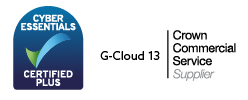Once you’ve got the fundamentals and best practices around first call resolution in place, consider the following avenues for improving that FCR metric:
- Understand the root of your issues
- Anticipate customer behaviour
- Invest in the right software
- Optimise your support structure
- Promote total contact ownership
- Create an informative knowledge base
- Gather feedback
- Identify goals
- Develop a cross-channel update strategy
What is FCR?
First contact resolution, or FCR, is a company’s ability to resolve a customer issue or query within the first interaction with the customer.
What’s the difference between first contact resolution and first call resolution?
Where first contact resolution refers to the first point of contact with a customer through any available channel, whether that be email, live chat or phone call, first call resolution refers only to the phone call channel.
Why is first call resolution important?

Measuring FCR is essential to ensure your business is doing everything it can to maintain a positive customer experience. Benefits of better first call resolution include:
- Reduced operational costs
- Improved customer and employee satisfaction
- Improved opportunity to upsell products and services
- Improved Net Promoter Score (NPS), which measures customer loyalty
- Maximised agent productivity
For more information, download a free guide to first contact resolution here.
FCR best practices
Be in it for the long-haul
To achieve a high FCR rate, you should aim to value quality over quantity. This means that your agents should be less concerned with the number of calls they’re answering, and instead should be invested in how best to satisfy the customer at hand within a single call.
Reduce customer effort
The more effort a customer has to go to to resolve their problem, the more opportunity there is for something to go wrong, and the more frustrated they become. A key practice in maintaining a good FCR rate is ensuring that the customer’s journey is easy and as painless as possible, solving their problem in as few exchanges as possible.
For more information on tools that can help improve your customer effort score, click here.
Put the customer experience first
Putting the customer first means streamlining your interactions and processes to make it as easy for them as possible. Sometimes, this means investing time and energy in customer satisfaction rather than prioritising call volume or other agent-focused factors.
Key FCR metrics and KPIs
Gathering data on your first contact resolution can provide insight into your customers’ frustrations, allowing you to anticipate their needs before they know them. Metrics also provide you with a quantitative way to measure customer satisfaction, aligning with the ongoing corporate effort to improve the overall customer experience.
In order to measure first call resolution, you’ll need to consider the following figures:
-
Total number of incoming calls
-
Total number of enquiries per contact channel
-
Total number of satisfied resolutions
-
Total number of satisfied resolutions reached on first contact
-
Call escalation rate per each type of enquiry
-
Longest average resolution time per each type of enquiry
-
Types of enquiry rarely resolved
-
Average NPS per each type of enquiry
How to calculate FCR

To find your FCR, you can divide the total number of first call resolved cases by the total number of cases to get the gross FCR rate.
However, contrary to other contact centre metrics, FCR is best kept as an internal benchmark rather than as a tool of comparison with other contact centres. Not only are all businesses different, but it’s likely that FCR will vary largely between departments as well as overall sectors. Technical support, for example, is likely to have a much lower FCR than departments handling simpler calls that require less expertise and problem solving skills to reach a resolution.
That said, a great self-service system will render fewer simple calls for a call centre to answer, as the customer is empowered to discover the answer to their question independently using your knowledge base. Though this will inevitably increase the proportion of complex, technical calls to simple calls and therefore reduce your FCR, this is in fact an indication of success and will result in an improved customer experience overall.
9 tips to improve FCR
1. Understand the root of your issues
If your first call resolution rate is low, getting to the root of your problem can help to explain your issues and determine factors that contribute to them.
Are there specific customer issues that continue to surface and are therefore causing a higher volume of calls? Is there a certain company policy or a general lack of training that is hindering agent performance? Are there hardware or software problems causing difficulty in agent responses?
Understanding the causes of your issues using root cause analysis can help you to engage in reparative and preventative measures to improve your first contact resolution.
2. Anticipate customer behaviour
Being able to predict what your customers need before they ask for it is a great way to streamline the problem solving process.
You can learn how to do this by getting to know your customer base, through the creation of customer profiles based on demographic data and customer distribution. Learning the types of customers that buy from your brand can help your agents in discussion, as well as providing insight into how to solve their problems as quickly and efficiently as possible.
3. Invest in the right software
Your call centre software can make or break your first contact resolution. The right software should be able to provide your agents with a comprehensive caller history as soon as they pick up the phone, as well as a supportive and unified dashboard with metrics to help them monitor performance. With good call centre software, you should be able to create automated tasks to help you update your CRM, help desk and other back office solutions, ensuring a reduction in human error when inputting customer data.
Your software should also have skills-based routing, which ensures the redirection of calls to the best and most suited department for that customer’s particular problem using an agent tagging system that allows you to group agents based on their department, skill set, language, location and more. This way, your customer is likely to reach the right person at the right time who will be able to solve their problem in the best way possible. Discover the tools that can help with call routing here.

4. Optimise your support structure
Your company’s support structure should be optimised to better accommodate the needs of your customers. For example, the support system in place should enable you to delegate each customer issue to the right level of support, so that basic questions can be answered by sales representatives, technical issues can be solved by technical advisors and so on.
A good way to ensure that your customer is matched with an agent with the right knowledge is to cross-train your staff. This can help to reduce call transfers between agents, therefore improving your FCR, whilst also enabling you to provide targeted training for your work force and to cope with fluctuating call volumes.
5. Promote total contact ownership
Total contact ownership is when the agent who takes the initial customer call takes care of the enquiry from starting problem to finishing resolution. Promoting this amongst your workforce ensures fewer transfers between agent departments, which encourages your team to work on customer problems collaboratively, rather than passing it around. This in turn increases both first contact resolution and customer satisfaction.
6. Create an informative knowledge base
A knowledge base is an organised collection of documentation that users can access through basic browse and search functions. It typically includes answers to frequently asked questions (FAQs), how-to-guides, and troubleshooting functions. A good knowledge base will help customers to self-serve and find answers to solve problems on their own. When it is done correctly, a good customer service knowledge base will enable you to scale your customer support program whilst reducing customer effort and improving your overall customer experience (CX).
A knowledge base is a great solution for any sized organisation due to its low investment costs, however, because basic knowledge bases are limited in capabilities needed for easy content management, a robust knowledge management solution has a far greater impact on customer and employee experience.
7. Gather feedback
One of the best ways to determine any barriers or struggles that your agents are facing which may be preventing them from improving their FCR rate is by asking them directly. Gathering feedback from your team on software, systems and policies can enable you to put the right support in place, so that your agents can do their job successfully whilst feeling valued and heard.
You should also consider any other departments that may be driving repeat calls to your centre, and involve them in adapting processes to make things run as smoothly as possible. Don’t forget to also ask your customers for their feedback, too - you can measure this through a regular review of your CSAT or NPS scores, as part of your VoC programme. Read more about customer feedback and how to gather it here.

8. Identify goals
Make sure that the goals of your business are shared with your team. Ensuring that every member of your workforce is working towards the same KPIs can provide a baseline level from which to judge your agents’ performance, and can be a great motivator for your team. FCR is a great metric with which to do this as it aligns the success of your agents with the happiness of your customers, but you should ensure that you’ve landed on an agreed methodology for measuring FCR across your organisation and its various channels.
Knowing what your goals are also helps in ensuring that your agents have access to all the training and information they need to get there. You might also consider introducing incentives for good performance.
9. Develop a cross-channel update strategy
A good cross-channel strategy will ensure that every member of your team across every department is kept up to date with the latest news, developments and plans for your business, whether that be surrounding new product information, marketing strategies or wider company changes.
Implementing a strategy like this across all of your departments will help your FCR by reducing the number of transfers needed during a customer call. If every one of your agents has all the relevant information needed to answer a query, there’s no need to pass the problem back and forth between departments.



